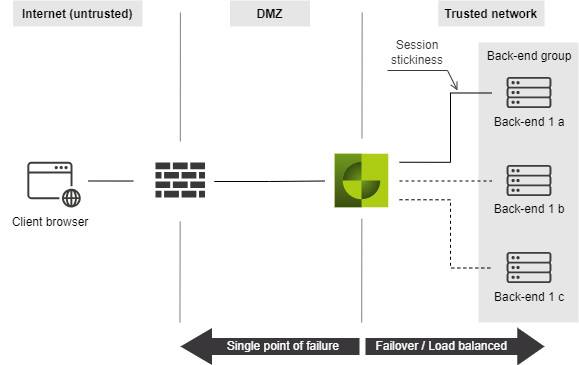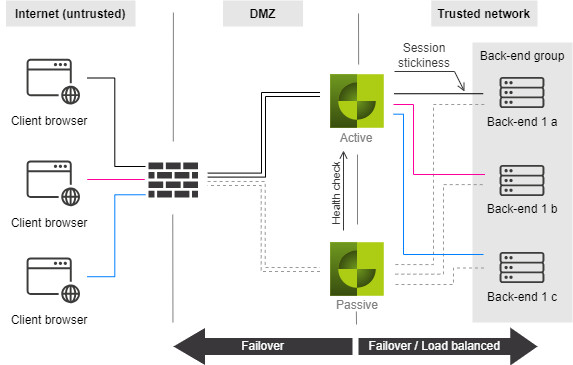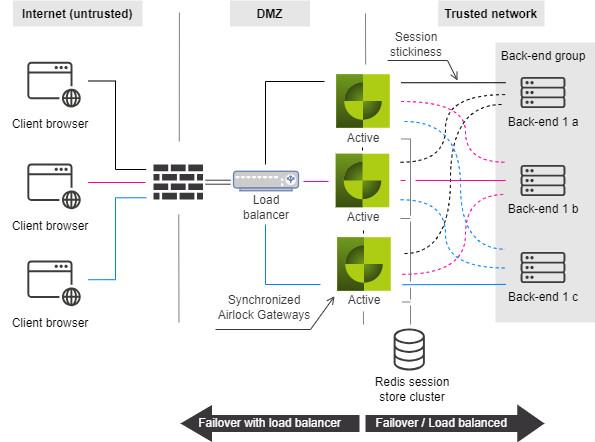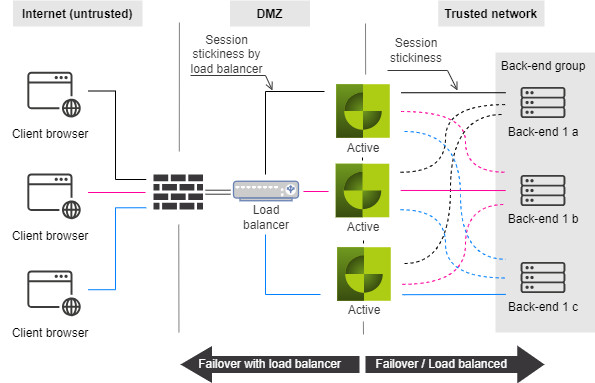Clustering, load-balancing and failover scenarios
This article describes three different setup scenarios for Airlock Gateway instances:
- A single gateway instance setup.
- A cluster of two instances using built-in Airlock Gateway functionalities.
- A setup of a load-balanced farm of Airlock Gateway instances with a dedicated load balancer.
Session stickiness is maintained for all scenarios in this section.
Single Airlock Gateway instance
Single Airlock Gateway setups without failover are recommended only for testing and integration environment.
For loads that cannot be managed with one single hardware anymore, Airlock Gateway supports upstream load balancing.
Pros:
| Cons:
|
Airlock Gateway failover cluster
Two Airlocks Gateway instances can be operated as a failover cluster with one active and one passive instance using built-in functionalities. In this setup, the active Airlock Gateway receives and processes data and is monitored by the passive Airlock Gateway. If the passive instance detects an error on the active one, it takes over automatically. The monitoring is done on a separate channel by using the cluster talk protocol.
This kind of setup is often used in production environments.
Pros:
| Cons:
|
Load balanced farm of active Airlock Gateway instances with external Redis session store
Two or more active Airlock Gateway instances can be operated as a load-balanced Airlock Gateway farm with an external Redis session store cluster to keep the session states and stickiness in sync for all gateways. In this setup, a dedicated load balancer orchestrates a number of Airlock Gateways – such a setup is typically used for high performance and redundancy requirements.
Using an external Redis session store (a cluster is recommended), active Airlock Gateway nodes can synchronize session states. With synchronized sessions, different requests of the same user session may pass different Airlock Gateway instances.
Pros:
| Cons:
|
Load balanced farm of active Airlock Gateway instances without Redis session store
Two or more active Airlock Gateway instances can be operated as a load-balanced Airlock Gateway farm with a load balancer that handles session stickiness. In this setup, a dedicated load balancer orchestrates a number of Airlock Gateways – such a setup is typically used for high performance and redundancy requirements.
If sessions are not synchronized via an external Redis session store, the load balancer in front of the Airlock Gateway instances must take care of session stickiness, i.e., make sure that all requests from a user session are always routed through the same Airlock Gateway instance.
Pros:
| Cons:
|



